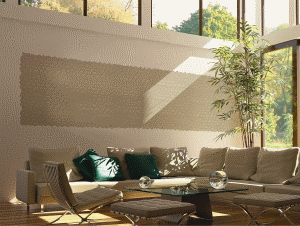
In a green building concept, "to build" means to minimise the impact of buildings on human health and the environment through a limited consumption of non-renewable resources and the use of materials that aren’t harmful to human health. The term Bio-Architecture means therefore the interdisciplinary science that deals with everything concerning the relationship between Man-Building-Environment.
This relationship dates back to prehistoric times, when Man felt the need to build a shelter for protection from the elements (rain, wind, cold…) and created the first types of architecture. These were deeply rooted in the land – locally available materials were exploited and construction techniques linked to the local material culture and traditions of the land were developed.
Therefore the environment intended as climate and as a source of raw materials, deeply influenced architecture and determined its characteristics. Over time buildings evolved, from primitive huts to modern skyscrapers. New materials, the great availability of energy and the rapid evolution of technology broke the old Building-Environment link, which had always played a fundamental role in design.
The building thus became a container, a sort of hermetically sealed barrier that separates the indoor from the outdoor and ensures comfort to its occupants by using climate control systems. The result of this turnaround has had a negative effect on Man and on the Environment: modern buildings are a cause of pollution to both domestic spaces and outer spaces.
First, they determine a high energy expenditure that damages the environment (eg. the consumption of fuel for heating and air pollution that derives from it).
Secondly, indoor comfort of the building is affected as well to such an extent that in the 80ies it started being diagnosticated as the "Sick Building Syndrome".
Indoor air pollution can be traced to modern construction techniques and the emanations from some of the commonly used materials (paints, lacquers, synthetic coatings, resins, etc.). Evidently outdoor pollution and domestic pollution have strong repercussions on the human biological system. (http://whqlibdoc.who.int/publications/2009/9789241547673_eng.pdf).
The aim of Green Building is to solve these problems by rekindling the ancient bond between Man, Building and the Environment, mutually dependent on each other.
BIOPIETRA® has always embraced the BIO philosophy, hence its name.
Building today means becoming aware of carelessness and mistakes made in the past and somehow going back to one’s roots with greater awareness, evaluating the right balance between ourselves and the world around us.
BIOPIETRA® cares about improving the way of constructing buildings in our cities and has long been committed to promote through innovation the culture of sustainability in the construction market. BIOPIETRA® is a versatile, economical and LEED Certified product. The elements, in fact, that compose it are perfectly regenerable, they are environmentally friendly and have no radon emissions. The colourings, even the luminescent pigmentations, are natural and transpirable and certified by ANAB and ICEA Institutes.
Bio-Architecture together with BIOPIETRA® products have a unique role today and enhance that charming and healthy architectural feeling that concrete and all other toxic materials partially and carelessly degrade.

